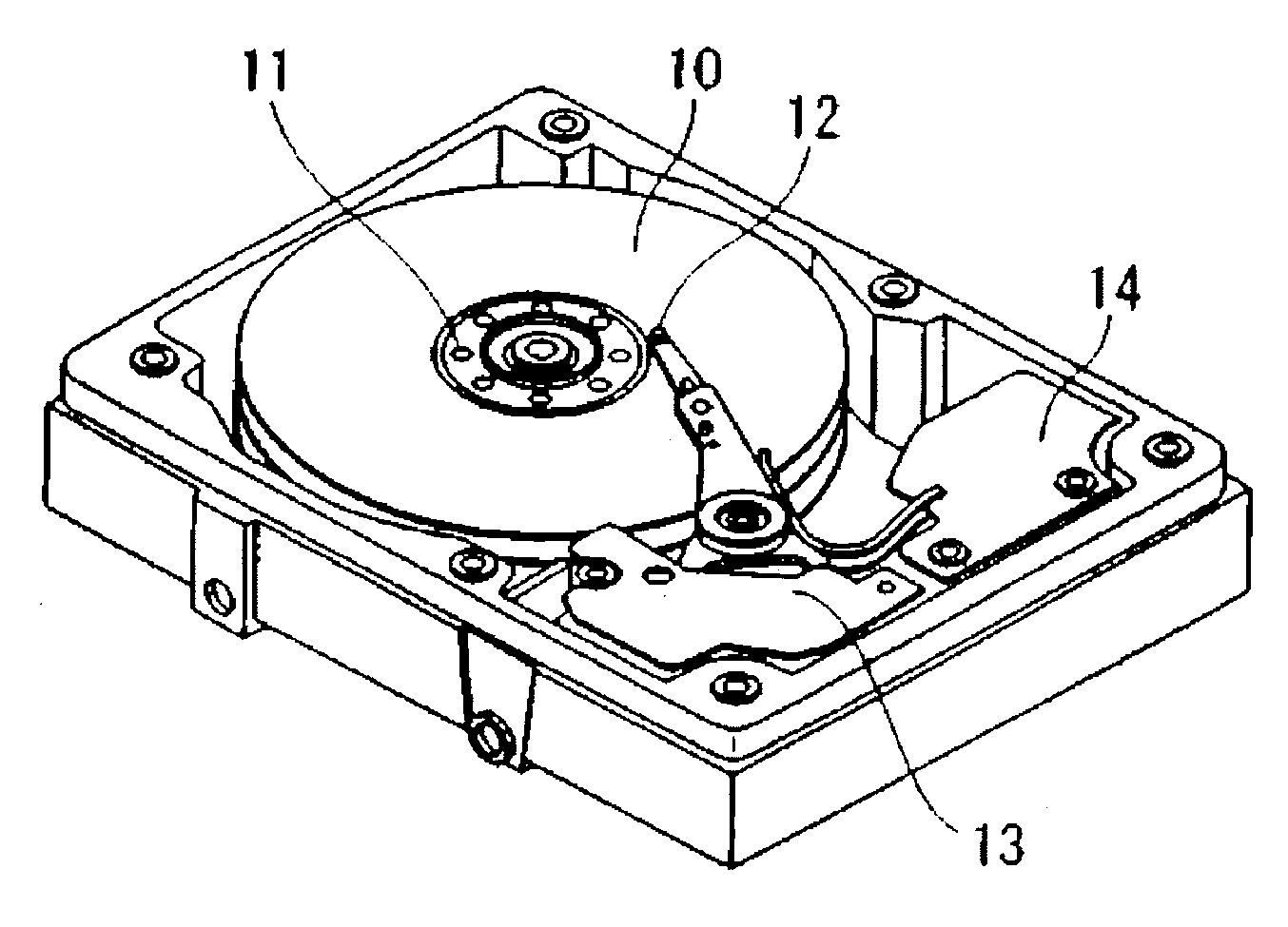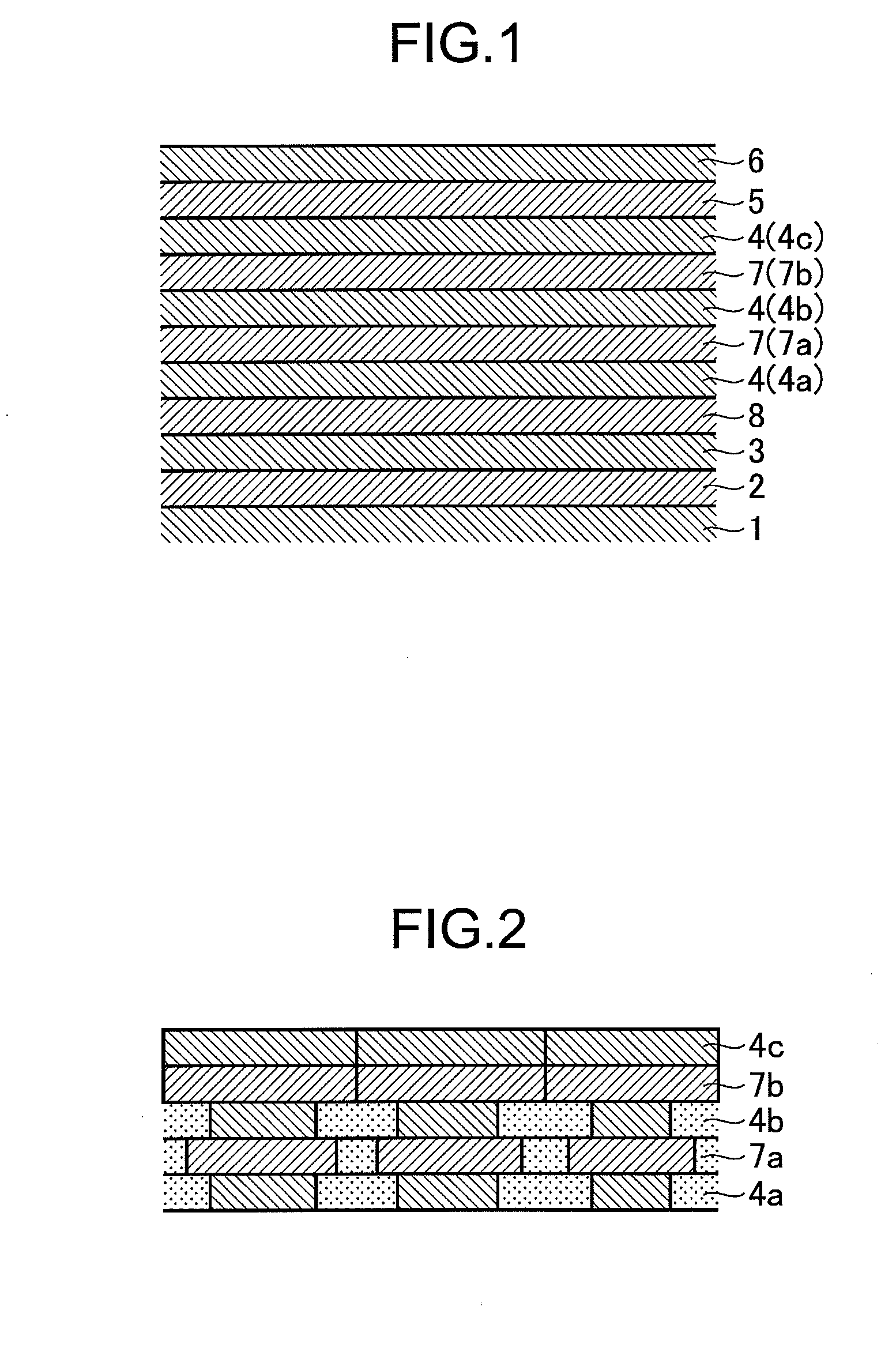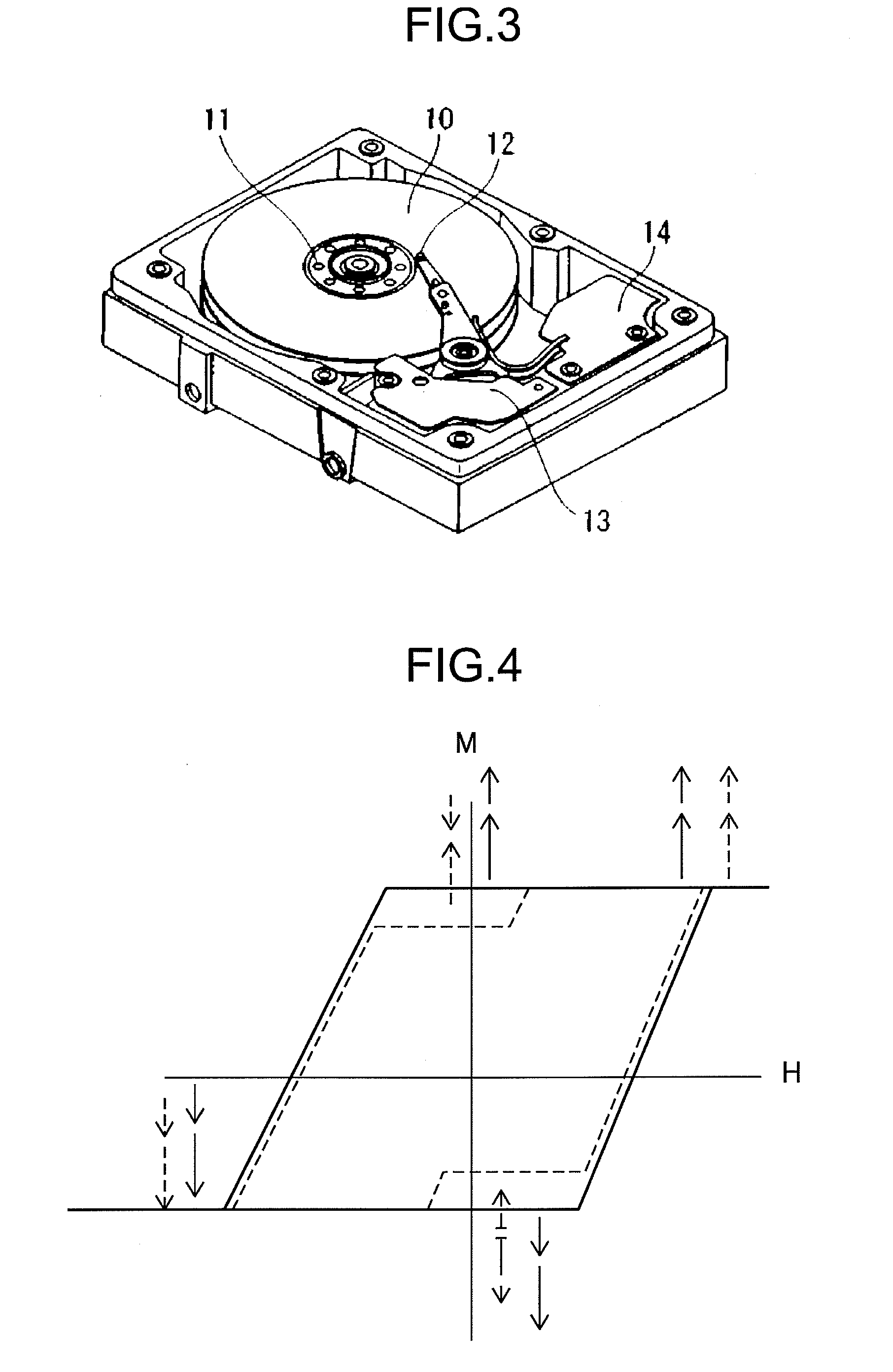Magnetic recording medium and magnetic recording and reproducing device
a recording medium and magnetic technology, applied in the field of magnetic recording medium, can solve the problems of reducing ow, reducing the efficiency of recording and reproducing, and reducing the difficulty of magnetization inversion
- Summary
- Abstract
- Description
- Claims
- Application Information
AI Technical Summary
Benefits of technology
Problems solved by technology
Method used
Image
Examples
example 1
[0154]A washed glass substrate (manufactured by Konica Minolta Co., Ltd., outside diameter: 2.5 inch) was put in a film-forming chamber of a DC magnetron sputtering apparatus (trade name: C-3040, manufactured by Anerva Corporation) and the film-forming chamber was evacuated until the ultimate degree of vacuum reached 1×10−15 Pa. Then, an adhesion layer having a thickness of 10 nm was formed on this glass substrate by using a Cr target. Using a target of Co-20Fe-5Zr-5Ta {content of Fe: 20 at %, content of Zr: 5 at % and content of Ta: 5 at %, balanced with Co}, a soft magnetic layer having a thickness of 25 nm was formed at a substrate temperature of 100° C. or less. A Ru layer was formed on the soft magnetic layer in a thickness of 0.7 nm and then, a soft magnetic layer of Co-20Fe-5Zr-5Ta was formed in a thickness of 25 nm as a soft magnetic under layer 2. The product Bs·t (T·nm) of the saturated magnetic flux density Bs (T) and film thickness t (nm) of this layer was confirmed to b...
example 1-2 , example 1-3
Example 1-2, Example 1-3, Comparative Example 1
[0167]A vertical magnetic recording medium was produced in Example 1-2 in the same manner as in Example 1 except for the nonmagnetic layer 7a was not formed, a vertical magnetic recording medium was produced in Example 1-3 in the same manner as in Example 1 except for the nonmagnetic layer 7b was not formed and a vertical magnetic recording medium was produced in Comparative Example 1 in the same manner as in Example 1 except for the nonmagnetic layers 7a and 7b were not formed. The results are shown in Table 1.
[0168]As shown in Table 1, it was found that Example 1 had a higher S / N ratio and higher OW characteristics required for high-density recording as compared with Examples 1-2, 1-3 and Comparative Example 1 in which the nonmagnetic layer 7a or 7b (or both) was not formed.
examples 2 to 37
[0170]Vertical magnetic recording mediums were obtained in the same manner as in Example 1 except that the material and film thickness of each of the magnetic layers 4a, 4b and 4c were changed. The results are shown in Tables 2 to 4.
TABLE 2Soft magnetic under layerOrientation adjusting layerMagnetic layer 4aCompositionBs * tCompositionThicknessCompositionThicknessComposition(mol %)(T · nm)(mol %)(nm)(mol %)(nm)(mol %)Example 1Co20Fe5Zr5Ta65Ni6W5Ru2091(Co15Cr16Pt)—6SiO2—3TiO2Example 2Co20Fe5Zr5Ta65Ni6W5Ru2091(Co11Cr16Pt)—6SiO2—3TiO2Example 3Co20Fe5Zr5Ta65Ni6W5Ru2091(Co18Cr16Pt)—6SiO2—3TiO2Example 4Co20Fe5Zr5Ta65Ni6W5Ru2089(Co15Cr16Pt)—7SiO2—4TiO2Example 5Co20Fe5Zr5Ta65Ni6W5Ru2092(Co15Cr16Pt)—5SiO2—3Cr2O3Example 6Co20Fe5Zr5Ta65Ni6W5Ru2090(Co15Cr16Pt)—3TiO2—3SiO2—3Cr2O3Example 7Co20Fe5Zr5Ta65Ni6W5Ru2094(Co15Cr16Pt)—3Ta2O5—3TiO2Example 8Co20Fe5Zr5Ta65Ni6W5Ru2091(Co12Cr16Pt4B)—6SiO2—3TiO2Example 9Co20Fe5Zr5Ta65Ni6W5Ru2091(Co10Cr16Pt7Ru)—6SiO2—3TiO2ExampleCo20Fe5Zr5Ta65Ni6W5Ru2091(Co10Cr1...
PUM
| Property | Measurement | Unit |
|---|---|---|
| surface roughness | aaaaa | aaaaa |
| surface roughness | aaaaa | aaaaa |
| flying height | aaaaa | aaaaa |
Abstract
Description
Claims
Application Information
 Login to View More
Login to View More - R&D
- Intellectual Property
- Life Sciences
- Materials
- Tech Scout
- Unparalleled Data Quality
- Higher Quality Content
- 60% Fewer Hallucinations
Browse by: Latest US Patents, China's latest patents, Technical Efficacy Thesaurus, Application Domain, Technology Topic, Popular Technical Reports.
© 2025 PatSnap. All rights reserved.Legal|Privacy policy|Modern Slavery Act Transparency Statement|Sitemap|About US| Contact US: help@patsnap.com



